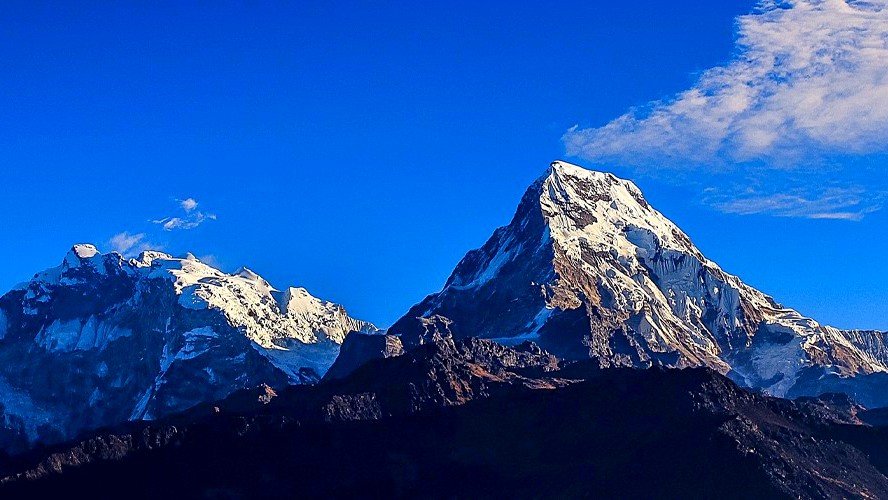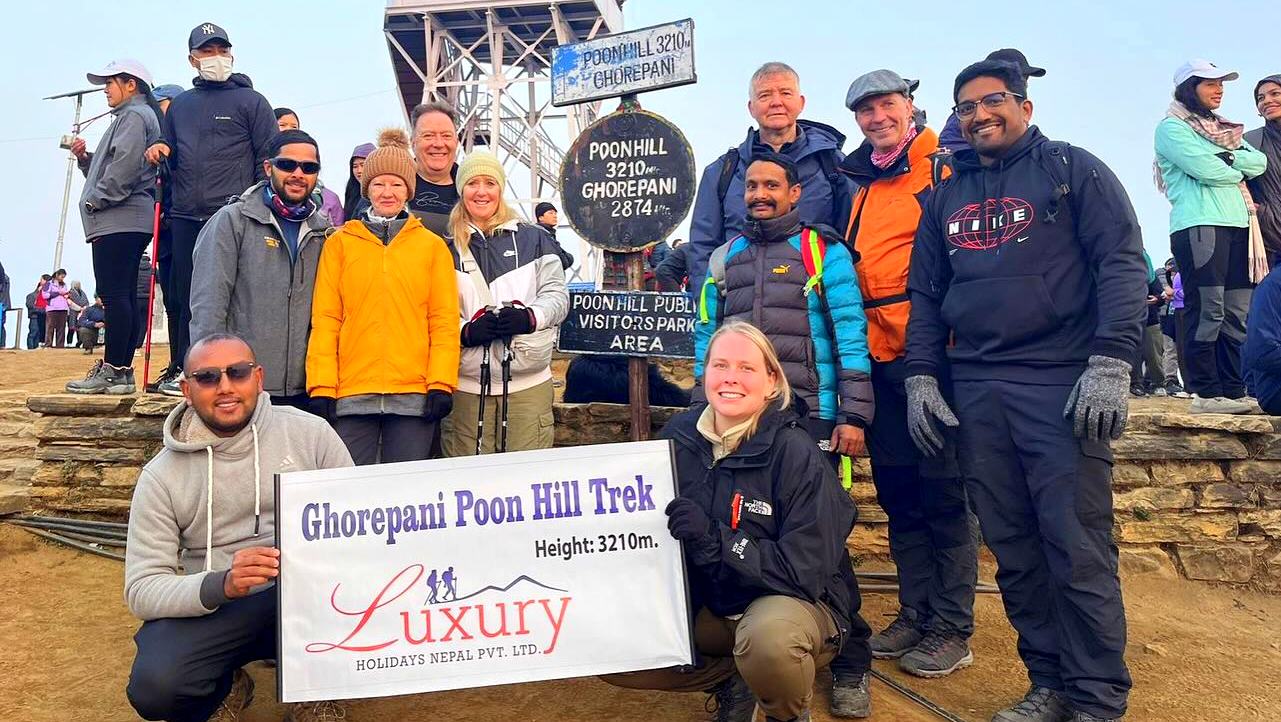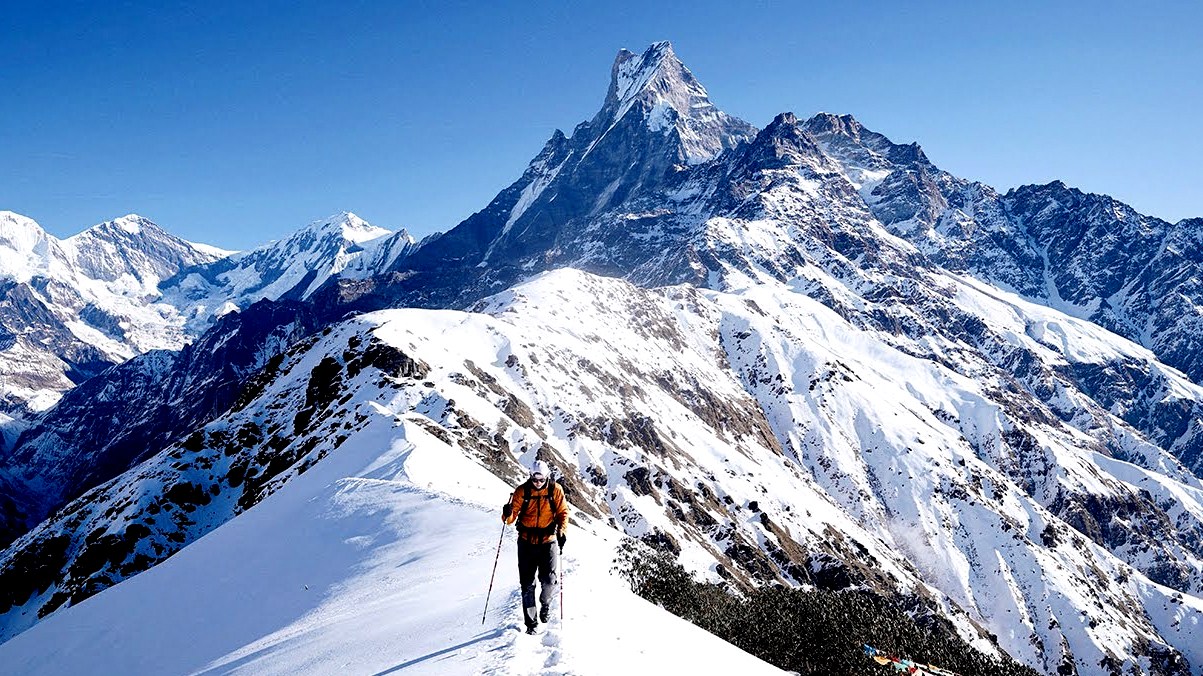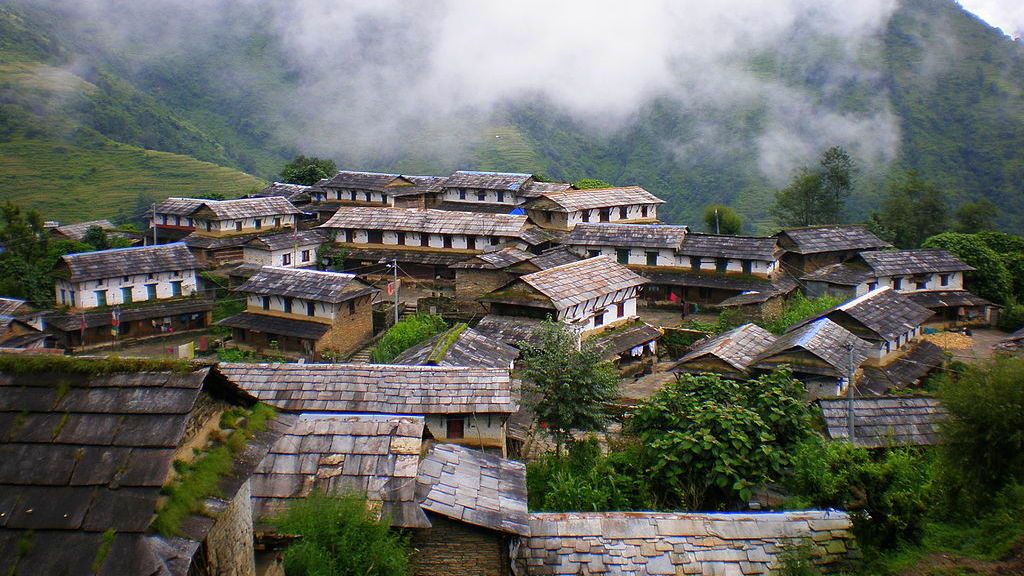Are you dreaming of exploring the majestic Himalayas but worried about the time commitment? The Annapurna Region of Nepal offers a variety of short treks that are perfect for travelers who want to experience breathtaking landscapes and rich cultural heritage without a long expedition. From the panoramic sunrise views at Poon Hill to the serene trails leading to Dhampus Village, these short treks provide an ideal introduction to hiking in one of the world’s most famous mountain ranges. Suitable for trekkers of all levels, these routes let you immerse yourself in the natural beauty and diverse cultures of Nepal over just a few days. Join us as we uncover the top short treks in the Annapurna Region, each offering a unique adventure that promises to be as enriching as it is exhilarating.

At Luxury Holidays Nepal Pvt. Ltd., we offer outstanding guided tours for those eager to explore the Annapurna Region through short treks. Our expertly crafted itineraries ensure you experience the full beauty and cultural richness of the Himalayas in comfort and style. With a commitment to quality and customer satisfaction, Luxury Holidays Nepal is recognized as a top choice for travelers seeking a memorable adventure in one of Nepal's most stunning landscapes. Trust us to make your journey unforgettable with our exceptional service and deep local knowledge.
Ghorepani Poon Hill Trek
The Ghorepani Poon Hill Trek is a favored choice for those looking to experience the breathtaking beauty of Nepal’s Annapurna region without the intensity of a long trek. Spanning just 4-5 days with a moderate difficulty level, it starts from Nayapul, a short drive from Pokhara, and reaches its highest point at Poon Hill (3,210 meters). This trek is best known for its spectacular sunrise views over the Himalayas and the vibrant rhododendron forests in bloom during spring. It also offers a wonderful cultural insight into the lives of the Gurung and Magar communities living in this area.

Highlights:
- Stunning Panoramas: Enjoy awe-inspiring sunrise views from Poon Hill, featuring the Annapurna and Dhaulagiri ranges.
- Floral Beauty: Walk through enchanting rhododendron forests, especially vibrant during the spring bloom.
- Cultural Experience: Explore the traditional villages of the Gurung and Magar communities and learn about their lifestyles.
- Accessible Adventure: With a maximum altitude of 3,210 meters, it’s a manageable challenge for beginners and families.
This trek is not only a visual delight but also a gentle introduction to hiking in the high Himalayas, making it perfect for first-time trekkers and those with limited time.
Dhampus Village Trek
The Dhampus Village Trek is beautifully succinct and scenic in the Annapurna region of Nepal, offering breathtaking views of the Himalayan ranges and a genuine taste of rural Nepalese life. Ideal for those seeking a short but rewarding outdoor excursion, it typically spans 2-3 days and is considered an easy trek, making it perfect for families and beginners.

Highlights:
- Mountain Vistas: Dhampus offers unparalleled views of the Annapurna Massif, including Annapurna South, Machhapuchhre (Fishtail), and Hiunchuli, providing some of the best photo opportunities in the region.
- Cultural Insight: The trek goes through Dhampus village, one of the gateways to the Annapurna Base Camp and home to the ethnic Gurung community. Here, trekkers can immerse themselves in the local lifestyle and enjoy the hospitality of the Gurung people.
- Natural Beauty: The path leads through lush rhododendron forests and rice paddies, enhanced by the backdrop of the stunning Himalayan mountains.
- Ease of Access: With its proximity to Pokhara, the trek starts after a short drive to Phedi from where the walk begins, making it easily accessible and straightforward to arrange.
This trek is not just a journey through nature but also an experience enriched with cultural insights and easy trails that welcome trekkers of all ages and skill levels.
Mardi Himal Trek
The Mardi Himal Trek is a hidden gem among the trekking routes in Nepal's Annapurna region, offering a quieter alternative to the more crowded trails. Typically lasting 4-5 days, this trek is marked by its moderate difficulty, making it a good option for those with some hiking experience as well as ambitious beginners looking for a challenge. The trek takes you through a diverse range of landscapes, from lush rhododendron forests to rocky mountain paths, and offers up-close views of the Mardi Himal and the iconic Machhapuchhre (Fishtail Mountain).

Highlights:
- Spectacular Views: The trek provides dramatic close-ups of Mardi Himal, Machhapuchhre, and parts of the Annapurna range. The viewpoint from Mardi Himal Base Camp is particularly stunning.
- Diverse Terrain: Hikers will traverse a variety of landscapes including verdant forests, alpine meadows, and high-altitude landscapes, each offering its own unique beauty and challenges.
- Off-the-Beaten-Path Experience: Since it is less trodden compared to other routes in the Annapurna region, the Mardi Himal Trek offers a more solitary and serene hiking experience.
- Rich Biodiversity: The trail goes through the Annapurna Conservation Area, home to a rich array of flora and fauna. Trekkers might spot wildlife such as the Himalayan Thar, Langoor monkeys, and various bird species.
This trek is an excellent choice for those looking to experience the peace and beauty of the Himalayas without the crowds. It combines physical challenges with some of the most spectacular natural landscapes Nepal has to offer.
Ghandruk Loop Trek
The Ghandruk Loop Trek is a popular short trek in the Annapurna region of Nepal, known for its scenic beauty and cultural significance. Typically lasting between 3-4 days, this moderate trek offers a great combination of beautiful mountain landscapes and cultural experiences. The trail loops through Ghandruk, a large Gurung village that is also one of the most famous ethnic villages in Nepal, providing a deep dive into the rich cultural heritage of the Gurung people.

Highlights:
- Mountain Scenery: The trek offers fabulous views of Annapurna South, Gangapurna, Annapurna III, and Machhapuchhre (Fishtail Mountain), among others. The vistas from Ghandruk village are particularly breathtaking.
- Cultural Richness: Ghandruk is a culturally rich village showcasing traditional Gurung lifestyle and architecture. The village also houses the Annapurna Conservation Area Project (ACAP) headquarters and several museums dedicated to the Gurung culture.
- Flora and Fauna: As part of the Annapurna Conservation Area, the trail through the Ghandruk Loop is lined with rhododendron forests and a diverse array of bird species, making it a delight for nature lovers.
- Accessibility and Comfort: The trek is relatively easy in terms of difficulty and offers good lodging facilities, making it ideal for those who prefer a less demanding route or are traveling with family.
The Ghandruk Loop Trek is perfect for trekkers who wish to experience both the natural beauty and the cultural tapestry of Nepal without venturing too high or too strenuous a journey. It serves as an excellent introduction to what the broader Annapurna region has to offer.
Royal Trek
The Royal Trek is an excellent introduction to trekking in the Annapurna region, famously named after Prince Charles who walked this route in the 1980s. This relatively easy trek spans just 3-4 days, making it ideal for beginners or those short on time but eager to experience the beauty of the Himalayas. The path leads trekkers through picturesque villages, rice fields, and subtropical forests, showcasing a panoramic view of the Annapurna range.

Highlights:
- Historical Route: Follow in the footsteps of royalty on a trail that offers a unique narrative and stunning natural beauty.
- Cultural Insights: Experience the local lifestyles as you pass through ethnic Gurung villages along the way.
- Scenic Views: Enjoy spectacular views of the Annapurna range, including Machhapuchhre and Lamjung Himal, from various points on the trek.
- Accessible and Gentle: This trek is known for its gentle paths and ease of access, making it perfect for those new to trekking or traveling with families.
The Royal Trek provides a perfect blend of cultural immersion and natural beauty, all completed within a short span of time and without the need to tackle high altitudes.
Things to consider while doing short treks in the Annapurna Region
When planning short treks in the Annapurna Region, it’s important to consider several factors to ensure a safe, enjoyable, and fulfilling experience. Here are some key considerations:
Physical Preparation
- Fitness Level: Assess your fitness level and choose a trek that suits your ability. Even short treks can be challenging due to steep climbs or high altitudes.
- Acclimatization: Be aware of altitude sickness and allow time to acclimatize, especially if trekking to higher elevations like Poon Hill or Mardi Himal.
Permits and Regulations
- Trekking Permits: Ensure you have all required permits. For most treks in the Annapurna region, you’ll need the Annapurna Conservation Area Permit (ACAP) and the Trekkers' Information Management System (TIMS) card.
- Respect Local Rules: Adhere to local regulations and guidelines set within the Annapurna Conservation Area to help preserve the environment and culture.
Timing and Weather
- Best Seasons: The best times for trekking are during the pre-monsoon spring months (March to May) and the post-monsoon autumn months (September to November) when the weather is clear and dry.
- Weather Forecasts: Check weather conditions and forecasts before and during your trek. Weather in the mountains can change rapidly.
Packing Essentials
- Appropriate Clothing: Pack layers for varying temperatures. Include thermal wear, waterproof jackets, and trekking boots.
- Gear and Supplies: Bring a good quality backpack, a sleeping bag suitable for the season, a first-aid kit, water purification tablets, and enough food and snacks.
- Navigation Tools: Carry a map, compass, or GPS device. Despite the popularity of the trails, having navigation tools is crucial in case you wander off the main path.
Accommodation and Meals
- Teahouses and Lodges: Plan your accommodation in advance where possible, especially during peak season. Teahouses offer basic lodging and meals.
- Food and Water: Stick to cooked meals and avoid raw vegetables and unboiled water. It’s safer to drink bottled or boiled water or use water purification methods.
Local Culture and Etiquette
- Cultural Sensitivity: Respect local customs and traditions. Dress modestly and ask for permission before taking photos of local people or religious sites.
- Economic Impact: Support local economies by hiring local guides and porters and purchasing local products.
Environmental Considerations
- Leave No Trace: Keep the trails clean, dispose of waste properly, and avoid single-use plastics.
- Wildlife Encounters: Maintain a safe distance from wildlife and do not feed the animals.
Safety and Emergency Preparations
- Travel Insurance: Ensure you have travel insurance that covers trekking activities, medical emergencies, and possible helicopter evacuation.
- Emergency Contacts: Keep emergency contact numbers handy and inform someone of your trekking plan and expected return.
By carefully considering these aspects, you can enhance your trekking experience in the Annapurna Region, making it not only memorable but also safe and respectful towards the environment and local communities.
Best Time for Short Treks in the Annapurna Region
Choosing the best time for trekking in the Annapurna Region is crucial for ensuring you have the most enjoyable and safe experience possible. The region's weather patterns play a significant role in determining the ideal months for trekking. Here’s a detailed overview:
Optimal Seasons for Trekking
1. Pre-Monsoon Spring (March to May)
- Weather Conditions: This period is characterized by warm weather with clear skies most days, which offers excellent visibility of the mountain landscapes.
- Advantages: The spring season is a fantastic time for those interested in flora, particularly rhododendrons, which bloom vibrantly across the hills in April, creating picturesque trails.
- Considerations: Temperatures can vary significantly between day and night. It's essential to pack both light clothes for daytime hiking and warm gear for chilly evenings.
2. Post-Monsoon Autumn (September to November)
- Weather Conditions: Autumn is generally considered the best trekking season in Nepal. The weather stabilizes after the monsoon, leaving the air clean and fresh, and the mountain views exceptionally clear.
- Advantages: Autumn also coincides with some significant Nepali festivals such as Dashain and Tihar, offering trekkers a wonderful cultural experience.
- Considerations: Nights get colder as November approaches, so appropriate cold-weather gear is necessary.
Other Considerations
1. Off-Season Trekking
- Monsoon (June to August): Trekking during the monsoon can be challenging due to heavy rains, slippery trails, and obscured mountain views. However, the rain mostly occurs in the late afternoon and evening, so morning treks are still feasible. The landscape is lush and vibrant during this season.
- Winter (December to February): The winter months can be very cold, especially at higher altitudes, making some high passes and peaks inaccessible due to snow. However, lower altitude treks like the Poon Hill or Dhampus Village trek are still possible and much less crowded.
2. Crowd Consideration
- Peak Seasons: March-May and September-November also tend to be more crowded. If you prefer a quieter trekking experience, planning your trip at the beginning or end of these periods might be advisable.
- Lodging and Reservations: During peak seasons, it’s wise to book accommodations in advance as teahouses and lodges can fill up quickly due to high trekker turnout.
By planning your trek around these seasons and conditions, you can optimize your experience, enjoying the Annapurna Region’s natural beauty and cultural richness under the best possible circumstances. Always check the specific weather forecasts and trail conditions before starting your trek, as these can change rapidly in the mountains.
Embarking on a short trek in the Annapurna Region is an excellent way to experience the magnificence of the Himalayas without the commitment of a long, strenuous journey. Whether you choose the panoramic vistas of Poon Hill, the cultural immersion of the Ghandruk Loop, or the serene solitude of the Mardi Himal Trek, each path offers its unique blend of natural beauty and local tradition. By considering the optimal seasons for trekking and preparing adequately for your adventure, you can enjoy these breathtaking landscapes safely and comfortably. Remember to respect the local environment and cultures as you explore—your mindful steps can help preserve this incredible region for future generations to enjoy. With the right preparation and a spirit of adventure, the short treks in the Annapurna Region promise an unforgettable journey into the heart of Nepal's natural wonders.
FAQs of the Short Treks in the Annapurna Region
Q: What are the best short treks in the Annapurna Region?
A: The most popular short treks include the Ghorepani Poon Hill Trek, Dhampus Village Trek, Mardi Himal Trek, Ghandruk Loop Trek, and the Royal Trek. Each offers unique landscapes and cultural experiences.
Q: How long do these short treks take?
A: These treks typically range from 2 to 5 days. For example, the Dhampus Village Trek can be completed in 2-3 days, while the Ghorepani Poon Hill Trek usually takes about 4-5 days.
Q: What is the difficulty level of these treks?
A: The difficulty varies depending on the trek. The Dhampus Village Trek is considered easy and is great for beginners, while the Mardi Himal Trek and Ghorepani Poon Hill Trek are moderately challenging.
Q: Do I need any permits for these treks?
A: Yes, you will need the Annapurna Conservation Area Permit (ACAP) and the Trekkers' Information Management System (TIMS) card for most treks in the Annapurna Region.
Q: What is the best time to go on these treks?
A: The ideal times are during the pre-monsoon spring (March to May) and post-monsoon autumn (September to November) when the weather is clear and the views are spectacular.
Q: What should I pack for a short trek in the Annapurna Region?
A: Essential items include sturdy trekking shoes, weather-appropriate clothing (think layers), a first-aid kit, a water purifier, a map or GPS device, and a good backpack. Don’t forget your camera for the incredible views!
Q: Are there any cultural etiquettes I should be aware of?
A: Yes, it’s important to dress modestly, ask for permission before taking photos of people, and be respectful when visiting temples and other sacred sites. Showing appreciation and respect for local customs will enhance your experience.
Q: Can I complete these treks without a guide?
A: While it's possible to trek independently, hiring a guide can enhance your experience as they provide valuable insights into the local culture and environment, ensure your safety, and help with navigating the trails.
If you need any further information, please contact us by email: at [email protected], Phone: at +977- 985 100 5129 (WhatsApp)




